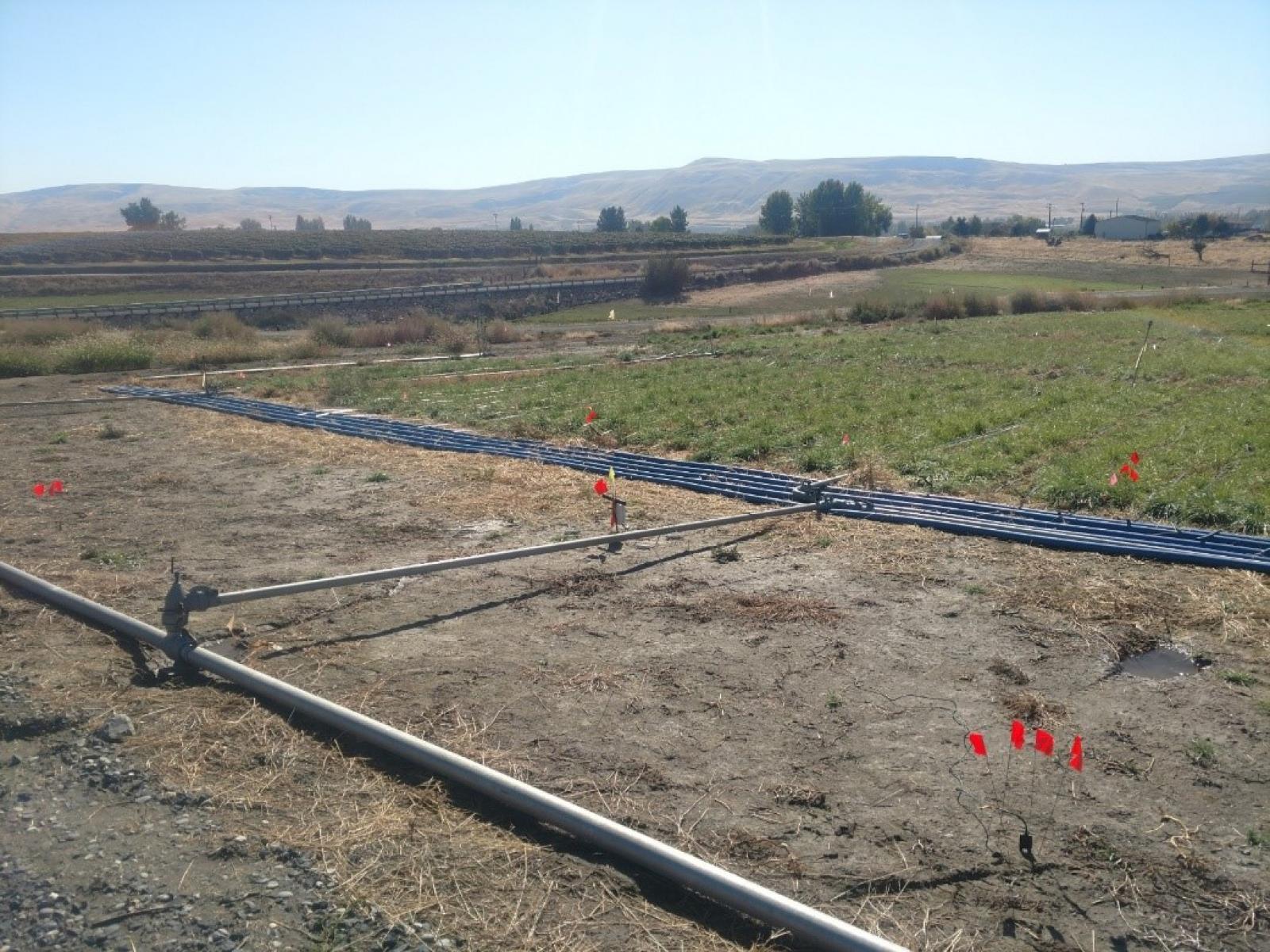Simplified Microbial Consortia Open a Path to Understanding Soil Community Ecology
Representative communities of reduced complexity provide new experimental context for investigating how soil microbial communities function

Soil samples were taken at this field site in Prosser, WA. All soil samples were collected in three field replicates within a 0-to 20-cm depth from the ground. For each of the three field blocks, researchers collected three homogeneous replicates.
The Science
Soil microbiomes are among the most diverse microbial communities on Earth. They also play an immense role in cycling soil carbon, nitrogen, and other nutrients that underpin the terrestrial food web. Soil microbes also regulate many of the planet’s other biogeochemical cycles. Yet studying how these microorganisms interact and function within natural communities is notoriously difficult. And how do soil microbiomes respond to floods, drought, and other perturbations? A new paper demonstrates representative, but simplified, microbial communities that offer a way to explore their more complex cousins, including a way to uncover the specific mechanisms behind the ecology of soil microbial consortia.
The Impact
Representative, reduced-complexity soil microbial communities are tools for better understanding soil microbiology—in particular the succession and stability of microbial communities in soil. They provide new experimental context for understanding how soil microbiomes are shaped by new environments and how stability is influenced by taxonomic structure and environment. Insights into these simplied microbial communities can then be applied to controlling sites of fully complex native soil.
Summary
Scientists need a deeper understanding of the ecological properties that control the structure and function of soil microbiomes, which are globally consequential and which are now undergoing little-know pressures in a changing world environment. Understanding them is difficult because of the sheer number of species present and because so few soil microbes have been cultivated and thoroughly studied in laboratory conditions. A new paper in mSystems reports on representative, reduced-complexity microbial communities that can serve as tools for better understanding soil microbiology. The reseachers, largely from Pacific Northwest National Laboratory (PNNL), were joined by co-authors from Washington State and Iowa State universities and the Arctic University of Norway.
They found that an environment of soil, rather than liquid, leads to a community of microbes that is representative of native soil sites. The researchers used a dillution procedure to obtain simplified, naturally adapted cohorts to serve as an experimental resource that recapitulates at least some soil microbiome behaviors. (Dillution, they found, can have a strong effect on reducing species richness.) Finally, they showed that such reduced-complexity communities are reproducible and that the communities are stable across time.
To cultivate their simplified soil microbiomes, the researchers looked at both bacteria and fungi. They also used soil, not liquid. Many other studies use only liquid and focus only on bacteria, making it impossible to simulate a full view of the soil microbiome in its native environment.
The research is part of a wider effort at PNNL and elsewhere to get a better understanding of the interactions within soil microbiomes that lead to function. They say these simplified consortia will help unravel the puzzle of such functional interactions and are a resource for the research community at large.
Next, the researchers will subject these simplified communities to multi-omics techniques. Using cultured platforms and molecular biology, they say, will lead to a better understanding of how soil microbial communities actually work.
Principal Investigator
Elias Zegeye
Pacific Northwest National Laboratory
elias.zegeye@pnnl.gov
Funding
This work was supported by the Department of Energy's (DOE's) Office of Science, Office of Biological and Environmental Research (BER), and is a contribution of the Scientific Focus Area “Phenotypic response of the soil microbiome to environmental perturbations” (70880). PNNL is operated for the DOE by Battelle Memorial Institute under contract DE-AC05-76RLO1830.
Revised: July 31, 2019 | Published: August 1, 2019
E. K. Zegeye, C.J. Brislawn, Y. Ferris, S.J. Fansler, K.S. Hofmockel, J.K. Jansson, A.T. Wright, E.B. Graham, D. Naylor, R.S. McClure, and H.C. Bernstein, “Selection, Succession, and Stabilization of Soil Microbial Consortia.” mSystems (2019). [DOI:10.1128/mSystems.00055-19]